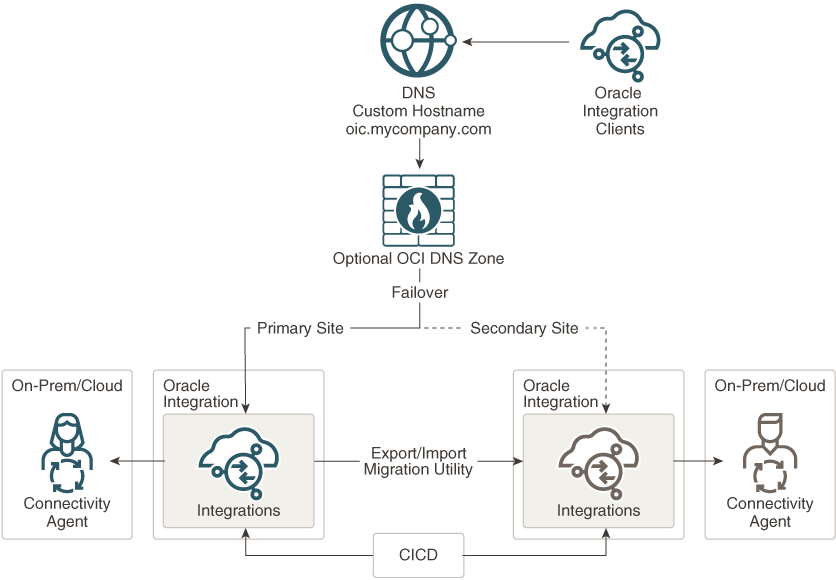Architecture
Learn about the architecture of the DR solution for the Integration feature.
The DR architecture for Integrations consists of two Oracle Integration instances in two different cloud regions, which are accessed using a single custom endpoint (URL). Optionally, you can use an OCI Domain Name System (DNS) zone to resolve the custom endpoint name.
Custom endpoint URLs are a feature provided by Oracle Integration that allow you to define a custom URL in a domain that you manage. You can use these URLs as the entry point to the Oracle Integration instances. For example, prod-integration.mycompany.com. For more information about configuring custom endpoints, see Configure a Custom Endpoint for an Instance in Provisioning and Administering Oracle Integration Generation 2.
The two Oracle Integration instances in the architecture are designated as primary and secondary, and both the instances run concurrently; however, only one of the instances receives traffic. Initially, it’s the primary instance that receives the traffic flow. When this instance becomes unavailable, the DNS record is updated to route the traffic to the secondary instance. The following image shows this architecture in detail for a scenario using connectivity agents:

You must update the DNS record at your DNS provider to switch between instances. Optionally, you can implement an OCI DNS zone to manage the sub-domain related to the Oracle Integration custom hostname. The OCI DNS zone can reflect changes to the CNAME much faster.
In this setup, you must synchronize the Oracle Integration metadata at both the sites using continuous integration and continuous deployment (CICD).